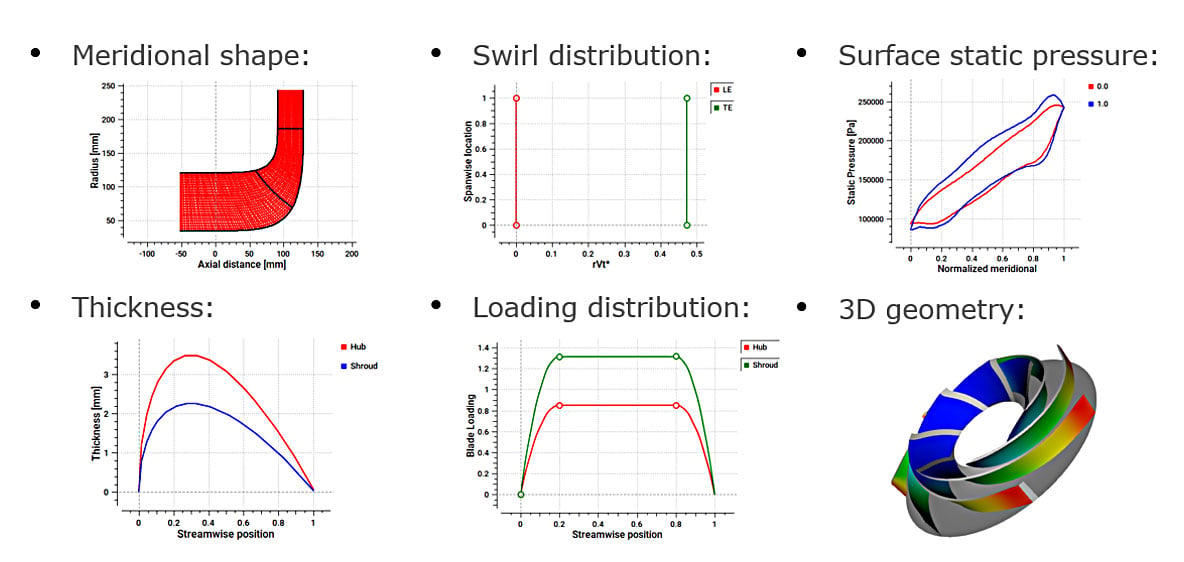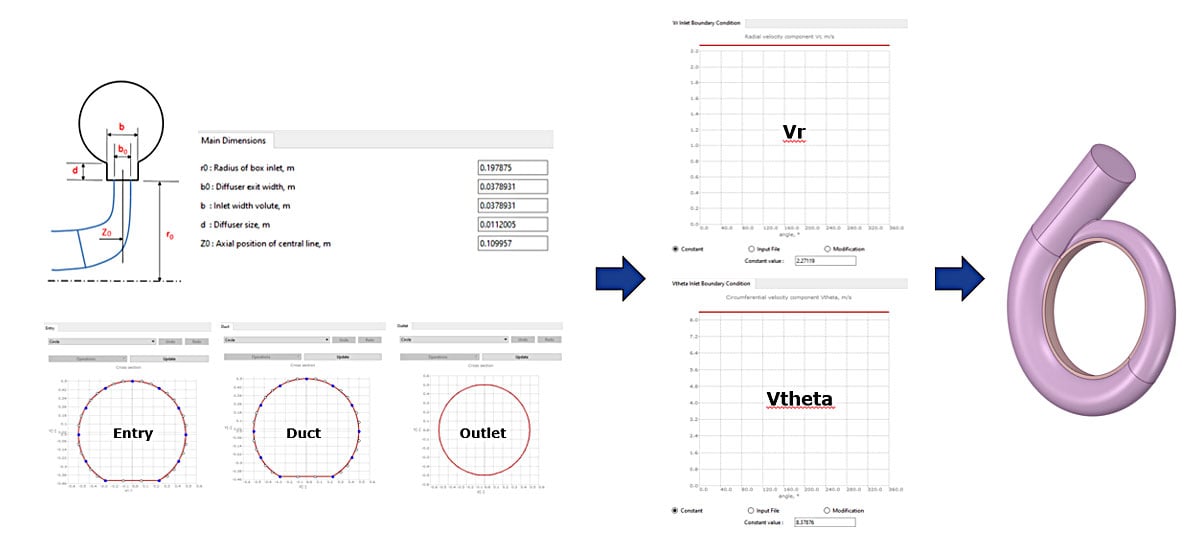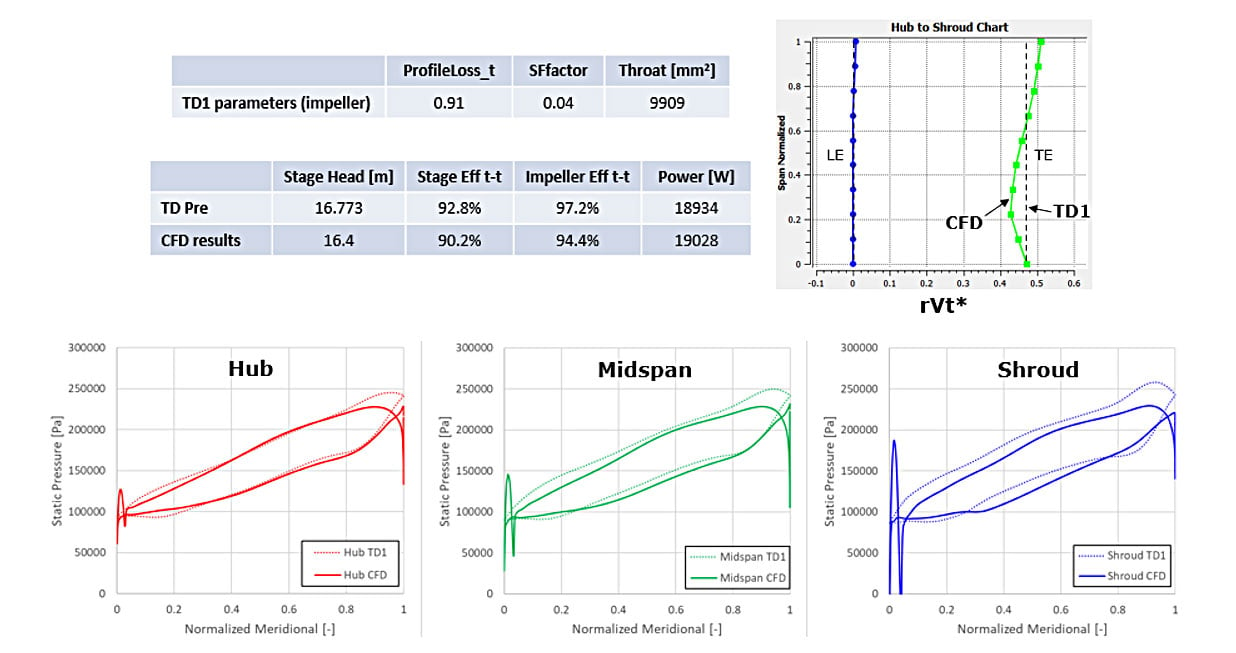Across the specific speed range, pumps are subject to various flow phenomena and loss mechanisms which are dominant in that particular range. For example, leakage and secondary flow effects are more dominant in lower ranges, whereas profile losses and corner separation in diffusers take priority in the higher ranges.
On the other hand, a phenomenon such as cavitation can affect pumps over the entire specific speed range and must be dealt with on a case basis.
Over the years, ADT has been involved in thousands of pump designs across all different specific speeds and applications and has developed considerable fluid dynamic knowledge to systematically design high performance pumps.
In this article series, we focus on centrifugal pumps and how to come up with a set of optimal design guidelines to suppress the loss mechanisms specific to them.
Pump Design Process
The first step in the design of any pump is to identify the required specific speed regime of the pump. This will dictate the meridional shape and hence the general flow direction through the pump. For example, a low specific speed pump is likely to be a radial or centrifugal type, whereas a high specific speed pump is likely to be of mixed flow or axial type.
From the required specific speed, we can identify the main flow phenomena and loss mechanisms dominant in that particular range as shown in Figure 1. From this information we can use design tools and 3D CFD to investigate our pump designs, and what follows is a set of principal design guidelines based on the fluid dynamics considerations of reducing dominant flow losses for a given impeller/diffuser.

Figure 1: Loss breakdown in centrifugal pumps
Meanline Design of Centrifugal Pump Stage
Figure 1 contains the specifications for the stage consists of an impeller and a volute, and based on this we can see that the design sits very close to the centrifugal region, and so this means that using these specs, it should be possible to design a centrifugal pump stage with a high efficiency level.

Figure 2: Centrifugal pump stage specifications and its position on specific speed chart
Using the meanline code TURBOdesign Pre, it is very easy to enter the given specs and then it quickly generates the meridional shape of the centrifugal pump stage in less than a second. As Figure 3 shows, it also provides a detailed report including the estimated stage performance and some important dimensions, as well as the required rVt* for the impeller. This rVt* value is equivalent to the work coefficients and they will be used for the 3D inverse design of the impeller blade in the next section.
Figure 3: LIVE Demo - Meanline design of a centrifugal pump stage in TURBOdesign Pre
3D Blade Design of Impeller
Figure 4.1 presents the setup for the baseline impeller in our 3D inverse design software TURBOdesign1, where the initial settings automatically come from the meanline code TURBOdesign Pre. The spanwise work distribution is free-vortex, with zero swirl at the leading edge and a constant value from hub to shroud at the trailing edge. The loading distribution is mid-loaded for this initial design, and then these inputs result in the 3D geometry of the impeller also shown, along with a smooth static pressure distribution throughout the blade surface.

Figure 4.1: 3D blade design of impeller in TURBOdesign1
4.2: LIVE Demo - Design of Impeller with 3D Inverse Design
Volute Design
The meanline code also generates a volute report, and this information is used by TURBOdesign Volute to design the volute for the centrifugal pump. Along with the main dimensions, it is also possible to define the cross-section shapes at the entry, duct and outlet sections which are specified as symmetric circular as shown in Figure 5.1. The most important step is to specify the radial and tangential velocity components at the volute inlet, because then TURBOdesign Volute runs a 2D inverse design code to produce the optimum area distribution for the given volute inlet velocity profile.

Figure 5.1: Input settings in TURBOdesign Volute
Figure 5.2: LIVE Demo - Volute Design with TURBOdesign Volute
Baseline Stage CFD Analysis
Once all the components of the centrifugal pump stage were ready, a CFD analysis was run on the baseline stage to check the performance. The boundary conditions used in CFD were chosen to match the inlet conditions and mass flow rate from the TURBOdesign1 case. As Figure 6 shows, ANSYS TurboGrid was used for the fully structured grid of the impeller, ANSYS Mesh for the hybrid mesh of the volute, and CFX for the flow analysis.

Figure 6: Baseline centrifugal pump stage CFD setup
Figure 7 has the CFD results for the baseline stage which indicate that the stage head is slightly lower than the target, and so there is scope for optimization of the baseline impeller. The stage efficiency is already quite high but the impeller optimization should bring it even closer to the meanline code estimate. It is also interesting to note that the pump power from CFD is very close to what was predicted by the meanline code, and that the work coefficient (rVt*) from CFD matches very closely with what was specified in TURBOdesign1. Finally, the blade loading plots from CFD are also in very good agreement with the TURBBOdesign1 prediction at the different spanwise locations.

Figure 7: Baseline centrifugal pump stage CFD results
In another article, we demonstrate the use of Optima feature in TURBOdesign1 to automatically optimize the baseline impeller and enhance its performance by improving the profile and secondary losses at the same time.
The inverse design method is applicable to all types of axial, mixed flow, and centrifugal pumps. Our pump design software facilitates the design of high-efficiency stages across multiple operating points, providing direct control over cavitation.
Geet Nautiyal
Geet Nautiyal is a Turbomachinery Application Engineer at Advanced Design Technology, focusing on design, marketing and customer support aspects.
View All Articles






Share This Post